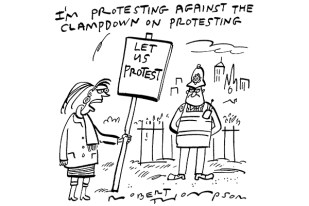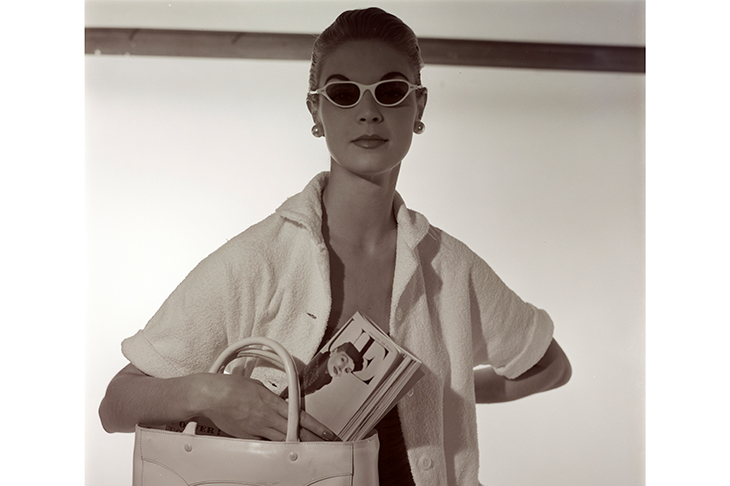‘What job do you want here?’ asked the editor of Vogue, interviewing a young hopeful. From behind her black sunglasses the 24-year-old replied coolly:‘Yours.’ It took time, but she got it. The girl was, of course, Anna Wintour. Now she is the global Vogue supremo and queen of fashion, before whose lightest frown the whole industry quakes, and the magazine is acknowledged to be the top glossy.
Its beginnings were small. It was launched on 17 December 1892, at a cost of ten cents an issue, and its dedicated founder struggled to keep it going. Its first editor was passionate about animals and its second was a female golfer with no previous publishing experience. Not until it was bought by the genius Condé Nast, then at the outset of his career, did Vogue become established. When Nast realised that anyone selling luxury goods had a hard time reaching their market, he arrived at his winning formula: the female-centred, class-based, shiny-paper magazine that lured in the tiny percentage of women who could afford these expensive desirables.
First he introduced colour; then the legendary Edna Woolman Chase as editor (her 56 years with Vogue is still the record). Though frizzy-haired and dumpy herself, she realised that those who worked for Vogue must promote the Vogue image. She made black silk stockings, white gloves and hats compulsory female office wear, and when one girl tried to commit suicide by jumping on to the subway track, told her: ‘We at Vogue don’t throw ourselves under subway trains, my dear. If we must, we take sleeping pills.’

British Vogue was launched in 1916, in the middle of the first world war. But when, post-war, it began to introduce avant-garde poetry, homosexual celebrities and incurred a loss of £25,000, the axe fell and the editor and her lesbian lover and number two were sacked. So when Alison Settle became editor, the fearsome Chase came over from New York to see that she was leading a suitably Vogue life. Discovering that Settle lived in Hampstead (‘vulgar!’) and came to work by tube, Chase forced her to move into a Mayfair flat with a uniformed porter and take taxis.
When Condé Nast publications was bought for $5 million in 1959 by Samuel Newhouse and run by his son Si, it ushered in an era of brutal in-fighting among senior staff and sudden, unceremonious sackings. The editor of French Vogue, who got the chop for wanting to put a black model on the cover, only discovered she had been fired when she went to the accounts department to pick up her pay cheque and was told it was the final one.
Nina Sophia Miralles’s admirably researched book takes us through the growing expansion of the Condé Nast empire, with Vogue launches in almost every country you can think of. Today there are 26 international editions. What fascinates are the dramas — above all the quirks and eccentricities of the various editors — that thread through the history.
Diana Vreeland was responsible for the magazine’s most expensive photoshoot ever: five weeks in Japan at a cost of more than $1 million (around $7.5 million today). Vogue had become split between editors. There were those who believed in showing garments as they actually were, so that women knew what they were getting, and those, such as Vreeland, who allowed photographers to express their wildest flights of imagination, often giving the clothes a mere walk-on part in a dream landscape or erotic fantasy — furs and models helicoptered to the cloud-swathed top of a Peruvian mountain or the porn-influenced shots of Helmut Newton. Vreeland also ran a column entitled ‘Why Don’t You…? (‘Wear violet velvet mittens with everything,’ was one answer). When the wild excesses became too much, she also had to go.
‘We at Vogue don’t throw ourselves under subway trains, my dear. If we must, we take sleeping pills’
As editor of French Vogue, Carine Roitfeld, stylist par excellence, showed bare breasts, children dolled up in full make-up and red nails and cigarettes hanging from a model’s mouth. In another shoot the model, supposedly recovering from elective plastic surgery, sports a zebra-skin coat with jewels flashing between the bandages. It was shocking, it was sexy, it went too far — and Roitfeld also went.
Brilliant, icy and pushy from the start, Wintour stepped into the piranha pool, to be made editor of British Vogue, where she culled half the staff, including old family friends, before moving on to House and Garden, and then to American Vogue. True to Newhouse form, Wintour’s predecessor only learnt of her sacking from a TV report.
There were battles with Vogue’s most serious rival, Harper’s Bazaar: photographers and models could only work for one or the other, and internally there was the sudden guillotine. Wintour steadily increased Vogue’s influence and prestige, raising $500,000 for Obama’s presidential campaign, giving the essential boost to talented young designers and withstanding everything from abuse to a tofu pie flung in her face (‘I think it was organic’ she said).
The down-to-earth Alexandra Shulman lasted as editor of British Vogue for 25 years, to be replaced by the first non-white, male and openly gay editor, who put celebrities on the masthead, introduced virtue-signalling and cleared out the posh girls who staffed the magazine. One of them said: ‘Fashion can chew you up and spit you out.’ Which just about sums it up.






Comments